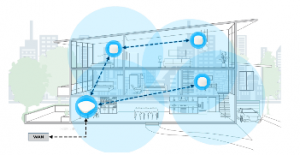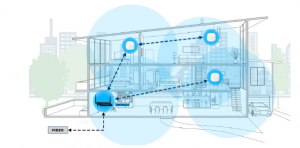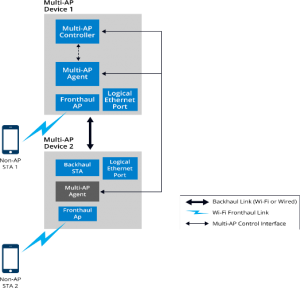COVID-19 has drastically transformed many fronts of life and one of the latitudes is to generate the need for contactless contact in people for work, education, entertainment, or even medical consultations & monitoring, etc. In this scenario, the internet has emerged as a dearest companion and the statistical data of this year across the globe justifies the same. The data usage has been swelled more than 60% and streaming by more than 15% post lockdown. People need to access the world from their homes. Where isolation has become another reality of life, the internet is the only window to connect outside world, it can be for entertainment, catching up with family/friends, increasing Work from home or avoiding the hospitals and get online consultations. But we cannot deny the fact that every cellular infra has some limits while these scenarios push it up-to limits and quality media is the scapegoat.
Requirement of Wi-Fi in homes shifts from “want” to “need” and this resulted in more deployment of Wi-Fi devices. But again, every rose has a thorn, in Wi-Fi deployment, coverage is the one. In traditional deployment, there is single router/AP to cover the home. When we start moving little away from the router to other rooms the range starts dropping and the connection becomes unreliable. Similarly, when we move from one floor to the next, the Wi-Fi signal drops and not adequate to provide any utility. Heat is also felt in the OEM/NEM’s ring to provide better user experience, services and meeting customer expectations. So what could be the solution?
“Wi-Fi EasyMesh” has come to the fore
Though single router/AP provides a great coverage but, in many places, need more than one AP to blanket the entire area. Multi AP/Router approach in homes/offices having multiple floors and rooms will be the answer to the problem. Where one Router/AP which act as a master, provides the broadband connectivity and multiple Access Points which act as slaves, are deployed to provide consistent coverage with no black zones for Wi-Fi signal. The primary router/Access Point or master connects to the broadband modem, and slaves connect to the master/slaves to create a mesh connectivity from device to the primary Router/Access Point. EasyMesh also removes the headache of incompatibility of devices from different vendors that was earlier the case in WDS. Now any device from any vendor which supports EasyMesh can be connected and extend the coverage.
Wi-Fi EasyMesh come up with easy way to install and configure multiple AP networks. These networks keep an eye on all working devices and self-adjust to make sure of good performance. To make the process more user friendly, by optimizing the performance with plug n play, hustle free deployment and other tons of features. The most common scenarios are shown below.
Figure 1: EasyMesh with Central Router
Figure 2: EasyMesh with 3rd party ONT Device
EasyMesh Architecture
The EasyMesh architecture consists of controller and agents running on Ap/Routers.The Controller can be deployed on AP hardware or cloud and connect to EasyMesh agents on AP. An EasyMesh R1/R2 Agent is a component of Multi-AP Architecture which is a logical entity that executes the commands received from the Multi-AP Controller, reports measurements and capabilities data for fronthaul Access Points, clients and backhaul links to a Multi-AP Controller and/or to other EasyMesh Agents. An EasyMesh Agent interfaces with Wi-Fi sub-systems for fronthaul APs and backhaul STA on the Multi-AP device to get measurements and capabilities data, it also apply configuration changes and execute Access Point control functions.
Advantages
- Flexible design
- Easy to setup
- Self-organizing
- Self-optimizing
- Load balancing
- Scalability
- Interoperability
- Client roaming
- Security





